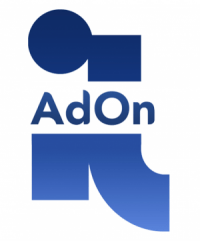Basic UniFi Portal Training
UDM Pro v1.12
UniFi Portal login: https://account.ui.com/login
Once logged in, you will be presented with all active and connected UDMs (UniFi Dream Machines) and Cloud Keys.
Overview
‘Applications’ screen:
Select any UDM.
You will be presented with the ‘Applications’ menu which will show all installed / available applications and their respective statuses.
This view also shows the UniFi OS version number, and the currently active backup schedule.
‘Network Dashboard’ screen:
Select ‘Network’ from the available list, which looks like:![]() You are now taken to your network ‘Dashboard’.
You are now taken to your network ‘Dashboard’.
Look for this icon in the left-hand navigation pane to return to the Dashboard at any time:![]() The Network Dashboard gives you a bird’s eye view of your network, including:
The Network Dashboard gives you a bird’s eye view of your network, including:
- ‘Traffic Overview’
- ‘Client Device Types’
- ‘Most Active Access Points’
- ‘Most Active Clients’
- WAN, and Gateway IPs
- ‘System Uptime’ (time between power cycles)
- ‘Internet Health’ bar
- ‘Speed Test’ from UDM (top level of network) to ISP
- A ‘WiFi Experience’ graph showing client devices and their quality of service over the most recent 12 hour period
Each ‘widget’ in this dashboard has hyperlinks you can use to navigate to other parts of the console to give you a deeper look into its respective focus.
‘Network Topology’ screen:
Select ‘Topology’ from the left-hand navigation pane:![]()
This screen shows a graphical representation of the network hierarchy, all devices on the network, and how the devices are connected. Clicking on any device will bring up its respective ‘Device Menu’.
‘UniFi Devices’ screen:
Select ‘UniFi Devices’ in the left-hand navigation pane:![]() This screen shows only UniFi devices. The table shows the network statistics for each device.
This screen shows only UniFi devices. The table shows the network statistics for each device.
Select ‘Display Options’ in the top right to filter devices based on the type and/or status.
‘Client Devices’ screen:
Select ‘UniFi Devices’ in the left-hand navigation pane:![]() This screen shows only client devices (non-UniFi). The table shows the network statistics for each device.
This screen shows only client devices (non-UniFi). The table shows the network statistics for each device.
Select ‘Display Options’ in the top right to filter devices based on the type and/or status.
‘Device’ menu:
The Device Menu applies to all devices on the network; UniFi network devices and all other client devices. It is accessible from any screen in the UniFi console where you can click on a device, including the following screens:
- Network Topology
- UniFi Devices, and
- Client Devices
- And others
Each device is interactive, and clicking on one will show its details in a pop-in menu on the right side of the window.
This menu defaults to the ‘Overview’ tab view which shows the device details and its relationship with the network. In this menu, you can ‘Block’ a device (if you never want a device to connect to your network) and ‘Forget’ a device (if you want to physically reconnect a device and assign it a new IP).
The ‘Insights’ tab shows a breakdown of how much bandwidth a device is consuming, and lists many of its sources of network traffic.
We will discuss the ‘Settings’ tab in another training if requested. Casual network monitoring does not necessitate the use of this tab.
‘Statistics’ screen:
Select ‘Statistics’ in the left-hand navigation menu:![]() This screen presents a more detailed view of traffic sources, quantity, and device demand than found on the Dashboard.
This screen presents a more detailed view of traffic sources, quantity, and device demand than found on the Dashboard.
The table on the bottom half of the screen will show statistics for client apps (e.g. Twitter, LinkedIn, Netflix) or clients (devices), depending on which is active on this toggle:![]() On the default ‘Apps’ view, clicking on an app shows you bandwidth consumption per device. Toggling to the ‘Clients’ view, and clicking on a device will show you which identified apps are consuming bandwidth on that device.
On the default ‘Apps’ view, clicking on an app shows you bandwidth consumption per device. Toggling to the ‘Clients’ view, and clicking on a device will show you which identified apps are consuming bandwidth on that device.
‘WiFi Insights’ screen:
Select ‘WiFi Insights’ from the left-hand navigation menu:![]() Note the three tabs at the top-center of the screen:
Note the three tabs at the top-center of the screen:![]() The default tab, ‘Performance’, presents many dimensions of WiFi performance network-wide, including:
The default tab, ‘Performance’, presents many dimensions of WiFi performance network-wide, including:
- Client device signal strength
- Wireless channel used
- WiFi version used, and
- Data rate based on signal strength to connected AP (Access Point)
The ‘Environment Scan’ tab shows the landscape of the wireless environment, including other WiFi networks. The information presented here can help a network administrator make decisions to help improve the performance of your network. It can indicate where wireless interference may be occurring within the vicinity of your wireless network.
The ‘Speed Tests’ tab contains links to download Ubiquiti’s WiFiman app from the Apple and Google Play stores. Speed tests run with this app will appear in this view.
‘System Logs’ screen:
Select ‘System Logs’ from the left-hand navigation menu:![]() Note the three tabs at the top-left of the screen:
Note the three tabs at the top-left of the screen:
![]() The default tab, ‘Admin Access’, is an auditing tool presenting the dates, times, and accounts used to log in to the UniFi console with administrative privileges.
The default tab, ‘Admin Access’, is an auditing tool presenting the dates, times, and accounts used to log in to the UniFi console with administrative privileges.
The ‘Threats’ tab presents network security threats caught by the UDM’s firewall feature.
The ‘User Activity’ tab will show login activities for any user accounts created, much like the view in the ‘Admin Access’ tab.
‘Notifications’ screen:
Select ‘Notifications’ from the left-hand navigation menu:![]() This screen presents notifications from Ubiquiti concerning the UniFi devices on your network; mostly software update notifications.
This screen presents notifications from Ubiquiti concerning the UniFi devices on your network; mostly software update notifications.
Note: your site is set up for automatic, weekly updates.
‘Settings’ screen:
Select ‘Settings’ from the left-hand navigation menu: ![]() The ‘Settings’ screen and its submenus contain sensitive settings critical to the operation of your network. Please do not attempt to change any of these settings without an experienced technician.
The ‘Settings’ screen and its submenus contain sensitive settings critical to the operation of your network. Please do not attempt to change any of these settings without an experienced technician.
UniFi Settings for Your Site:
Please contact ITAdOn or an experienced UniFi technician when revising these schedules.
Backup schedule: weekly, Friday, 3AM
Device updates: weekly, Saturday, 3AM
UniFi OS updates: weekly, Sunday, 3AM
Basic Troubleshooting
Your UniFi experience will usually be trouble-free. However, there may be times when a particular UniFi or client device presents a challenge.
In most cases, resetting the problematic connection should resolve these issues (e.g. disconnecting a patch cable from a client device, or “forgetting” a WiFi connection in Windows, and reconnecting).
If you can localize a problem to a single UniFi device, restart the device using the instructions in step 2 below.
In cases where network disruptions occur on more than one or two devices, a soft reboot of your networking hardware may resolve the issue. Follow the below steps to gracefully reboot your entire physical network stack.
- Navigate to the ‘UniFi Devices’ screen within the ‘Network’ application.
- Beginning from the bottom of the device list with your APs, then your Switch(es), and ending with your UDM, restart each UniFi device as follow:
a. Click on UniFi device
b. On the pop-in menu on the right side of the screen, select the ‘Settings’ tab:
c. Scroll to the bottom of the ‘Settings’ menu and select the ‘Manage’ expanding menu:
d. Select ‘Restart’, and click the blue ‘Confirm’ button in the popup
e. Select the next device and repeat steps a – d until you restart your UDM - Once you reboot your UDM, your entire network will be inoperable for a few minutes
- If issues persist, particularly with any connections you have across the internet, repeat steps 1 – 3 and then power cycle your ISP modem(s) (unplug power for 15 seconds and reconnect power)
- If issues still persist, please notify ITAdOn or a qualified network administrator.
Please do not hesitate to contact our Remote IT Support or On-site IT Support team for any upcoming network upgrade project.






